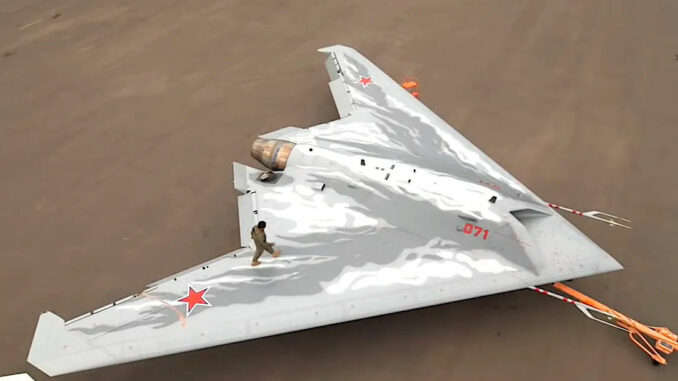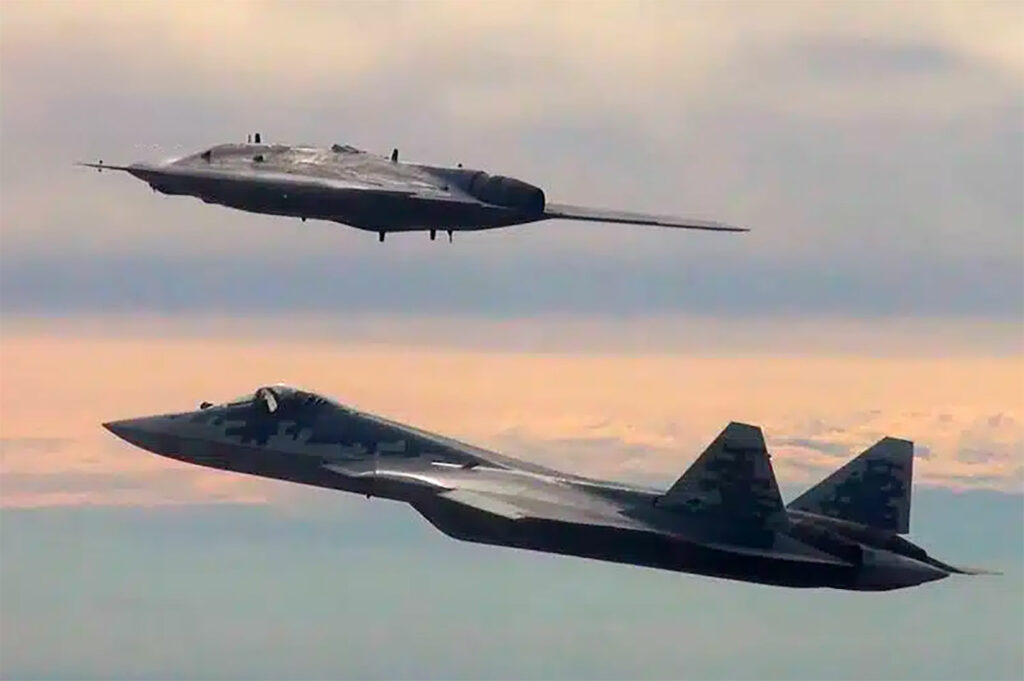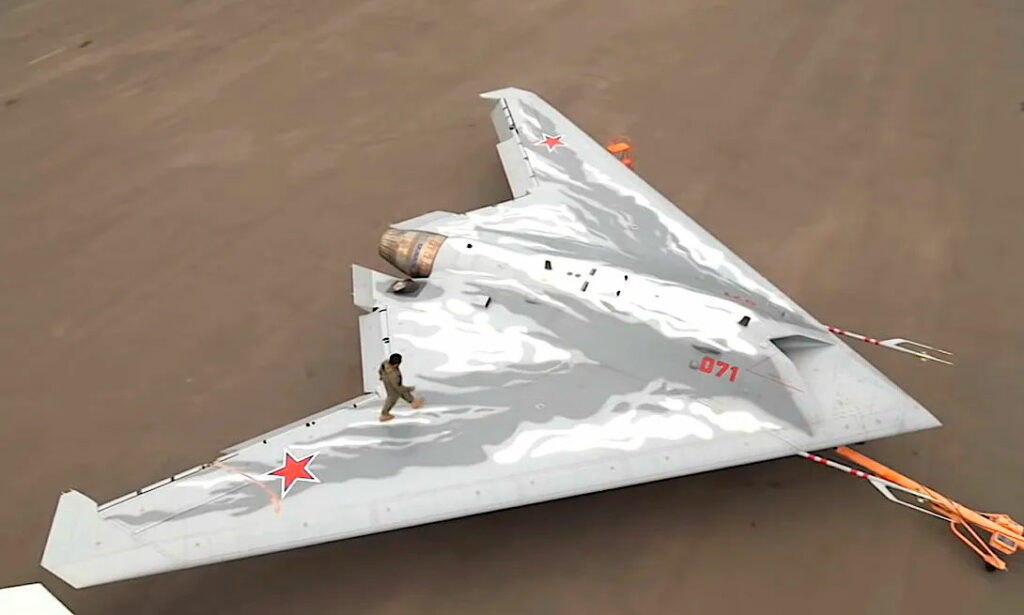
Ukraine: Western-made components found in downed Russian S-70 drone, despite sanctions imposed on Russia.
A Russian S-70 Okhotnik-B drone, shot down in Ukraine, contained numerous electronic components manufactured in the West, despite sanctions aimed at preventing Russia from acquiring these technologies. Among the manufacturers were American and European companies such as Analog Devices, Texas Instruments, Xilinx-AMD, Infineon Technologies and STMicroelectronics. This discovery reveals the challenges posed by the uncontrolled circulation of electronic components, and underlines Russia’s ingenuity in circumventing embargoes.

Analysis of the Russian S-70 drone: a concentrate of Western technologies
The Russian S-70 Okhotnik-B (or Hunter-B) drone is an unmanned stealth aircraft designed for reconnaissance and strike missions, capable of operating in tandem with manned fighter jets or on its own. Despite economic sanctions aimed at limiting Russia’s access to Western technologies, an investigation by the Ukrainian Defense Intelligence Directorate (GUR) revealed that this model contained more than 30 American- and European-made electronic components.
The S-70 Okhotnik-B, shot down in Ukraine because of friendly fire, is one of the heavy prototypes developed by Russia as part of its combat drone program. This drone is particularly well suited to infiltration missions in hostile zones, thanks to its flying-wing configuration, which reduces its radar signature. The presence of Western components in this machine highlights Russian strategies for acquiring cutting-edge technologies, despite international efforts to block the export of these sensitive elements.
The origin of components: how Russia circumvents sanctions
The components identified in the S-70 come from several major Western suppliers. These include products from Texas Instruments, Analog Devices, Xilinx-AMD, Infineon Technologies and STMicroelectronics. These companies, while respecting the rules of sanctions compliance, cannot control the resale of their products on the global market, where counterfeiting and recycling of electronic chips, often from China, are commonplace.
The semiconductor industry is faced with the problem of detour of its products. With around 3,000 billion chips produced between 2021 and 2023, controlling the entire distribution chain represents a colossal challenge. Components can be stored in warehouses for years, beyond the direct control of manufacturers. In addition, so-called “legacy” or “mature” chips, which are less sophisticated but durable, can be integrated into weapons without immediate restriction.
Manufacturers’ response to the discoveries in Ukraine
The companies concerned reacted by emphasizing their efforts to control the export of their components. Analog Devices and Texas Instruments have affirmed their commitment to preventing the detour of their products to Russia. Texas Instruments has stopped shipments to Russia as of February 2022, tightening controls to block suspicious orders. Infineon has also wound up its operations in Russia, demanding strict guarantees from its distributors to prevent any detour of its products.
For semiconductor manufacturers, compliance with international sanctions and cooperation with the authorities to prevent the military use of their components remain a priority. However, the complexity of the global supply chain and the use of distributors make comprehensive product monitoring impossible. Companies are working with American and European authorities to better control the circulation of their products, but this task is made more difficult by the black market and bypass networks set up by countries such as Russia and Iran.
Economic and geopolitical consequences of the proliferation of electronic components
Current sanctions aim to limit Russia’s military capabilities by preventing the import of critical technologies. However, the case of the S-70 demonstrates the existence of a parallel market enabling Russia to maintain its weapons capabilities. With a growing military budget to compensate for the wear and tear on its arsenal, Russia is investing in indirect supply networks, particularly in Asia and the Middle East, to procure the necessary components.
The situation also reveals an economic vulnerability for the semiconductor industry. With global demand for chips set to reach €1,000 billion by 2030, companies need to adapt their strategies to prevent their products ending up in unauthorized military applications. Controlling the export of these critical components remains a major geopolitical issue, as it impacts the ability of states to exert economic pressure on countries under sanctions.

Solutions proposed to reinforce control of sensitive components
Faced with the proliferation of electronic components in Russian weapons, several solutions are being considered. The Ukrainian Defense Intelligence Directorate (GUR) suggests tightening export controls by applying increased inspections on dual-use products, likely to be used in both civilian and military applications. It also recommends involving banks in verification processes to detect anomalies in commercial transactions.
Companies, for their part, are invited to strengthen their monitoring measures in collaboration with governments. The addition of compliance clauses in contracts, increased monitoring of end customers, and the adoption of new technologies to trace components throughout their lifecycle are some of the options put forward. In addition, international cooperation initiatives could be launched to harmonize inspection and export control policies.
A major challenge for the semiconductor industry and international security
The case of the S-70 shot down in Ukraine highlights the importance of monitoring the distribution of electronic components. Despite sanctions, Russia manages to integrate Western technologies into its weapons, raising crucial questions about the scope of current controls. The stakes go beyond the military: this is a global challenge that calls into question the ability of technology industries and governments to effectively control global supply chains.
With ever-adapting sanctions and reinforced cooperation, it is possible to limit these detour. Nevertheless, as long as parallel routes exist, the presence of Western components in Russian military systems will remain a complex problem.
War Wings Daily is an independant magazine.